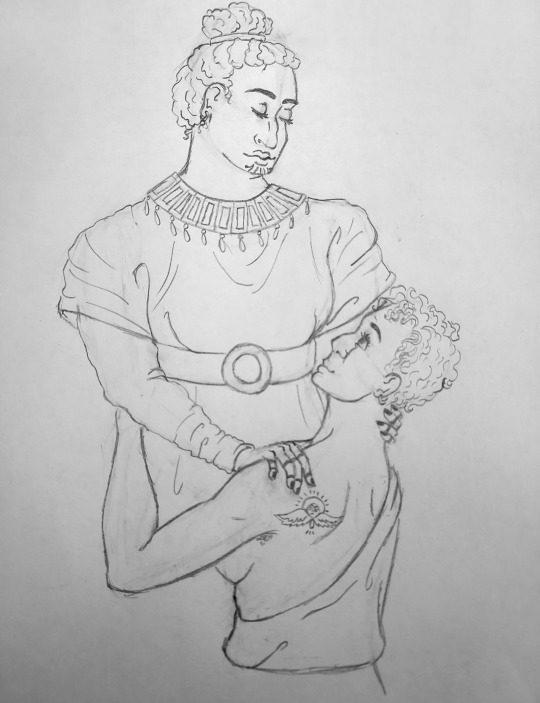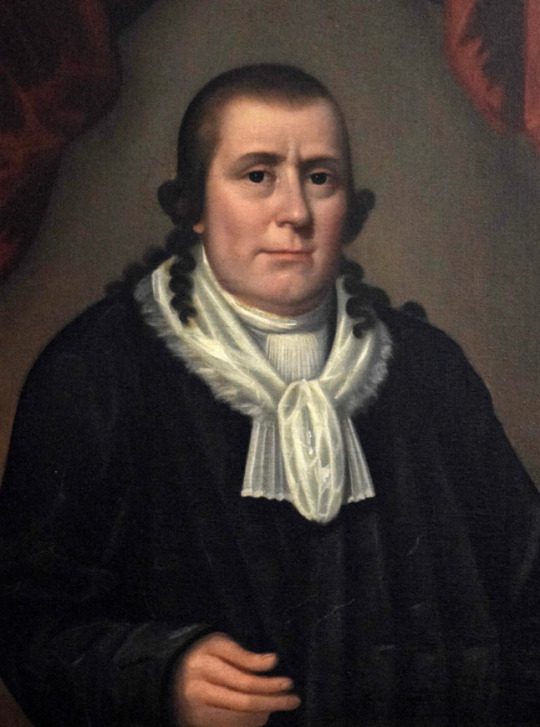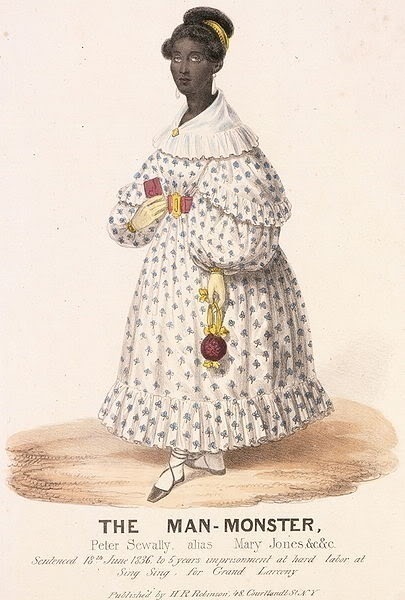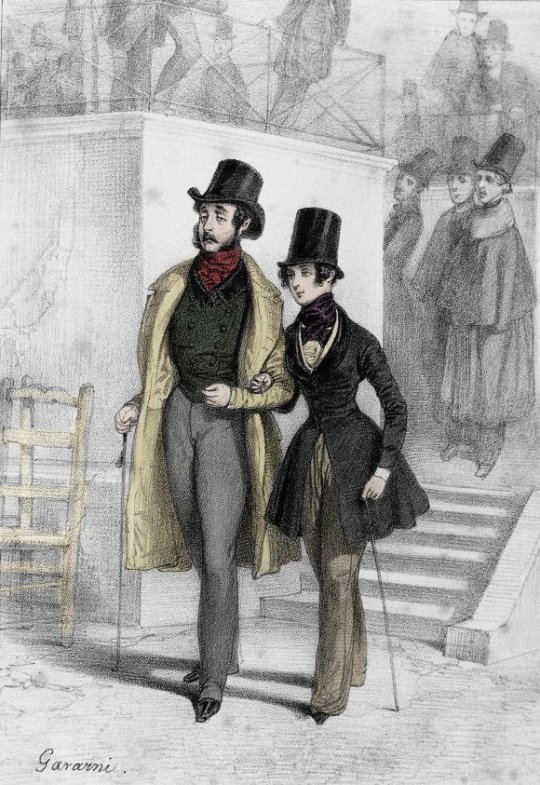#Coptic language
Explore tagged Tumblr posts
Text
Past tense in Coptic
ⲁⲓ- (I)
ⲁⲕ- (you masculine)
ⲁⲣⲉ- (you feminine)
ⲁϥ- (he)
ⲁⲥ- (she)
ⲁⲛ- (we)
ⲁⲣⲉⲧⲉⲛ- (you pl.)
ⲁⲩ- (they)
Examples:-
Ⲡⲁϧⲱⲙ ⲁϥϣⲉⲛⲁϥ ⲉ̀ϯⲁⲛⲍⲏⲃ (Pakhom went to school)
ⲧⲁⲙⲁⲩ ⲁⲥⲟⲩⲉⲙ ⲡⲉⲥϧⲣⲉ (my mother ate her food)
ⲛⲓϧⲣⲟϯ ⲁⲩϫⲉⲣϫⲉⲣ ϧⲉⲛ ⲡⲓϭⲱⲙ (the kids played in the garden)
#coptic#egypt#ⲭⲏⲙⲓ#egyptian#kemet#ancient egypt#archeology#pharaonic art#egyptian mythology#pharaoh#coptic language#grammar#past tense
30 notes
·
View notes
Text
youtube
youtube
I was researching Northeast African lyres recently and came across two songs from this channel written in Old Coptic! This first one is about the new year, which for Copts occurred earlier this month. I would've shared these anyway but a lot of the comments on these videos aren't very pleasant, so I also want to expose them to a more positive audience.
27 notes
·
View notes
Text
Just leaving this here.
Feel free to reblog.
#dougie rambles#political crap#middle east#Asia#africa#north africa#Egypt#coptic#languages#language revival#language#language revitalization#endangered languages#threatened languages#Coptic language#Coptic people#news#everything is in the news today#reblog this#please reblog this#reblog the shit out of this
7 notes
·
View notes
Text
hi, sorry. did coptic just give up on naming yellow and just start calling it "color"?
2 notes
·
View notes
Text

#ancient egyptian#egyptian language#egyptian#egyptology#languages#linguistics#hieroglyphs#hybrit#lingblr#langblr#alephbet#hebrew alphabet#daybreak system#daybreaksystem#sandstone#language nerd#coptic#sahidic#sahidic coptic#coptic language#coptic alphabet#hyperfixation#hyperfixation go#special interest#rocks#stone#sand#notebook#notes#study notes
0 notes
Text
The writing on the dandelion shrine being "oddly similar to Coptic" is so fucking interesting since this shrine is in North America and assumably like a millennium old
#if the shrine language and coptic share a common root it's probably a ridiculously old language with remarkable anthropology implications#dead boy detectives#dbda
23 notes
·
View notes
Text
Linguistic Map of Europe, 600 AD.

This interesting linguistic map of Europe around 600 AD illustrates the diverse and complex tapestry of languages and dialects spoken across the continent during this period.
The map highlights the extensive reach of Slavic languages in Eastern Europe, while the Western and Southern regions are dominated by Romance languages, including West Romance and Italo-Dalmatian, which evolved from Latin.
Old Norse and Anglo-Saxon occupy the northern territories, reflecting the early stages of Germanic language distribution.
In the Mediterranean and parts of North Africa, Koine Greek, Coptic and African Romance are prevalent, showcasing the influence of the Roman and Byzantine Empires.
The map also depicts the significant presence of Uralic languages such as Saami and North Finnic in the northernmost parts of Europe, and the Oghur and Common Turkic languages in the Eurasian steppes.
This linguistic diversity is a testament to the various migrations, conquests and cultural exchanges that shaped early medieval Europe.
#Linguistic Map#Europe#medieval europe#languages#dialects#slavic#romance#latin#germanic#koine greek#coptic#african romance#uralic
5 notes
·
View notes
Note
Come learn German with us /lh
i would love to but unfortunately i have Ass Dont Have Dopamine and cant focus long enough to learn a language
#which sucks#because there are like seventeen languages we want to learn#list of languages we want:#spanish french german greek russian ASL finnish swedish FSL japanese korean arabic coptic portuguese#and thats not even counting all the dead ones we want to learn for ritual purposes
7 notes
·
View notes
Text
Just saw a trailer for a horror movie seemingly based on Jewish mysticism. Me being a fan of religiously inflected horror, I go to the name of the director/writer. No one I recognize. I go to the wiki for him and....he's almost def not actually Jewish.
*Wilhelm scream*
I fucking hate hate hate how hard it is to come across movies dealing with not-xtian religious-ish horror.* And I hate that on the rare occurrence you do see something that's supposedly not-xtian, most of the time it has no one from the subject group involved in writing or directing. It's especially galling because the whole thing with most religious horror is the invocation of some kind of esoteric or obscure element but given that...yknow...lots of religions and cultures are closed, and any esoterica is either incredibly specific (meaning you can't just graft xtian interpretations of concepts onto them and say 'close enough'), or elements of an even *more* closed part of that religion.
At best what we get is something lazy and boring, but not intentionally offensive. At worst it's a complete slap in the face of the subject religion/culture.
*note: this complaint is largely about mainline releases in the US/UK/Canada. Which, yes obvs these are heavily culturally xtian places but also there are a lot of not-xtians involved and fans of genre media so it's increasingly frustrating that they're like...not 'rare' finds in that they're not out there, but rare in that they don't get as much (if any) marketing push.
#like at a certain point just be lazy within the parameters of xtian horror please#dicking around in someone else's culture especially for purposes of horror-fying it is beyond excuse at this point#and real talk: theres MORE than plenty xtian esoterica out there to get into#but like...dont go stealing concepts from like the coptics and then making some wildly anti-arab shit yknow#or like utilizing language of the Ethiopian orthodoxy to show spooky backwards xtians yknow?
3 notes
·
View notes
Text
The use of Coptic rather than Demotic to write ancient Egyptian can perhaps be traced to the introduction of Christianity in Egypt, the alphabetic script being preferred for writing Christian scriptures because it was free of the "pagan" taint of the older writing system. - James P. Allen, "Coptic: A Grammar of its Six Major Dialects" (2020)
well, now we know why Djehuty hates Coptic so much
#coptic#ancient egyptian language#lore#the pagan taint of the older writing system#djehuty is never going to accept this shift#ever#never ever ever#djehuty#egyptian-mythology#meanwhile sutekh is composing stinky love poetry in the coptic writing system right off the bat#“this is so much easier than demotic”
1 note
·
View note
Text
ϩⲁⲛⲣⲁⲛ ⲛ̀ⲧⲉ ϩⲁⲛⲧⲉⲃⲛⲱⲟⲩⲓ ⲛⲉⲙ ϩⲁⲛϩⲁⲗⲁϯ ϧⲉⲛ ϯⲙⲉⲧⲣⲉⲙⲛ̀ⲭⲏⲙⲓ
Names of animals and birds in Coptic










#coptic#egypt#kemet#ⲭⲏⲙⲓ#archeology#ancient egypt#egyptian#egyptian mythology#pharaonic art#pharaoh#africa#coptic language#languages#ancient languages#art#egyptian language#north africa#coptic art#history#kumat
90 notes
·
View notes
Text

Coptic lesbians (inspired by @felrija's work)
#cipher talk#actually egyptian tag#my art#Masr#Might do an ink & color of this eventually#What does one call a lesbian in Coptic. We have ⲧⲣⲓⲃⲁ so tribade does calque p much directly#But I think we could be more inventive. ⲧⲣⲓⲃⲁⲕⲣⲓⲛⲟⲛ perhaps#Though I am biased to prefer to create de-Hellenized terminology and that's all Greek influence on the language right there
20 notes
·
View notes
Text
“bUt NAeBodY sPakeS iT¡ tiS a DEaD LAnguaGe, sHUrE¡ WHiT’s tHe PoiNt? Let iT DiE.”
Okay.
Okay.
Could you perhaps tell us WHY the language you fear so greatly is threatened or dead?
No. Do go on.
Tell us.
Why is it dead? What happened to those who spoke it? Why weren't they able to pass it down the generations?
Why is this so?
Because they sure as shit didn’t just stop speaking it for the sheer hell of it!
You don’t know?
Oh dear.
No it’s not natural.
And it’s not about nativism, you daft shite!
Imagine being scared of a language!
Why does it threaten you so?
Why do you act like it shakes the foundations of your state?
Tell me.
Pathetic!
…
Many such cases.
MANY such cases!
#dougie rambles#personal stuff#vent post#political crap#languages#language revitalization#language#language revival#endangered languages#leftism#anti imperialism#decolonization#anti fascism#many such cases#irish language#gaelige#syriac#syriac language#aramaic#breton#manx#Cornish#scottish gaelic#welsh#cymraeg#hawaiian language#te reo māori#coptic#basque#euskara
61 notes
·
View notes
Text
Coptic, a language used by the Copts (today as a liturgical language for Coptic Christianity, and until the 16th century widely used as a vernacular) of Egypt is a direct descendant of the Ancient Egyptian language; it can be viewed as the most recent stage in that language's development. Today it has no native speakers, but there apparently may have been some elderly people with passive competence even into the 1930s. This makes Egyptian by far the longest attested language in history, with at least 5200 years of continuous use documented in the historical record.
310 notes
·
View notes
Text
Wiktionary cites the word for princess as Ⲱⲉⲉⲣⲉⲛ̄ⲣⲣⲱ (Sahidic (Upper Egypt)) Ⲱⲉⲣⲓⲛ̀ⲟⲩⲣⲱ (Bohairic (Delta)), which comes from šrjt pr-ꜥꜣ-t (shariyt para-oh-it), "daughter of the queen"
But using para-oh (Pharaoh) to refer to kings is a Late Egyptian thing. In Ild Egyptian they didn't use the word Pharaoh to refer to kings, it means "big house", they started referring to kings as "the big house" later on.
Para (pr) is house and -oh (ꜥꜣ) is big/great.
nswt was the word for the king of Upper Egypt specifically, but then it meant king of Egypt in general.
Monster High was the best nonhuman representation we were exposed to but the character names were all bad puns with very little cultural/racial(nonhuman) consideration
Frankie Stein is okay I guess even though the surname was Frankenstein
Draculaura is... okay I guess
Clawdeen Wolf is a stretch but not unbelievable
Cleo de Nile is an abomination of a name.
Cleopatra was not from the culture that had mummies and pyramids, she was from a Greek family that ruled Egypt 4 THOUSAND years after mummies and pyramids.
"de Nile" is modern French, the Egyptians didn't call it "Nile", they called it Yātraw, and definitely didn't use "de".
I'm trying to give her a more proper name. As far as now I've got Shāriyt Niysīwat Yātrawʕaʀ, "princess of the Nile", or "Daughter of the King of the great River.
The bare romanisation is šrjt nswt jtrw-ꜥꜣ (for ancient Egyptian connoisseurs who got damage from the common-folk-friendlier spelling)
If it looks like a sentence, that's normal, royal ancient Egyptian names were all full sentences.
I guess her non-mummy friends in Monster High would call her Sharit, which is just the (Englishy-fied) word for "daughter". It kinda sounds like Share it.
Disclaimer: the vowels in šrjt are not listed in my sources, I extrapolated them
#ancient egyptian#ancient egypt#old egyptian#languages#late egyptian#coptic#coptic language#sahidic#bohairic
25 notes
·
View notes
Text
Roughly 10 Cool Historical Queer Figures More People Should Know About
Part 1 - From Ancient Era to Early Modern Era
In spirit of Pride Month here's some snippets of queer history I think are interesting.
I've been working on a series of deep dives into interesting historical queer figures, but I haven't had the time to continue my list after the first entry about Julie d'Aubigny. I do want to continue with it, but I came to the realization that I will never have to time to do all the cool and interesting figures in depth, since there's too many, so I decided to do a list with brief descriptions about some of my favorite figures who are not that well known. Some of them are more well-known than others but I think they all deserve more acknowledgement.
I was able to trim down the number of figures to (roughly) 20, which was still too many for one post, so it's two posts now. They are in chronological order, so this part is set mostly before Victorian Era and the second part will be from Victorian Era onward.
This list is centered around western history (but not exclusively) because that's the history I'm most familiar with, though it's definitely not all white, since western history is not all white. I will be avoiding using modern labels, since they are rarely exactly applicable to history, rather I will present whatever we know about these figures' gender, sexuality and relationships. If there's information about what language they used about themselves, I will use that. Often we don't know their own thoughts, so I will need to do some educated guess work, but I will lean towards ambiguity whenever evidence is particularly unclear. If you are the type of person who gets angry with the mere suggestion there's a possibility that a historical gnc person might not have been cis, I encourage you to read my answers to related asks (here and here) first before sending me another identical ask. Try to at least bring some new arguments if you decide to waste my time with your trans erasure.
1. Khnumhotep and Niankhkhnum (latter half of 2400 BCE)

Khnumhotep and Niankhkhnum were ancient Egyptian royal servants, and possibly the first recorded gay couple in history known by name. They shared the title of Overseer of the Manicurists in the Palace of King Nyuserre Ini. They both had a wife and children, but they (along with their families) were buried together in a tomb. The tomb decorations show them similarly as other afterlife couples.
2. Marinos the Monk (c. 5th-8th century)
Marinos the Monk was born as Marina somewhere in eastern parts of Byzantine Empire, likely in the Levant. He was from a wealthy Christian family, possibly Coptic. Assigned female at birth his widowed father planned to marry him off and go to a monastery himself, but he convinced his father to take him with him dressed as a boy named Marinos. His father agreed and they were accepted as monks. After his father died many years later, he continued his life as a male presenting monk. Later he was accused of fathering an illegitimate child with a daughter of an innkeeper, which was not possible, but he didn't revoke the accusations, instead he begged for the abbot's forgiveness for "his sins". Marinos was banished from the monastery and became a beggar. For 10 years he raised his alleged illegitimate child as a father, until he was allowed to return to the monastery and do penance. Only after his death the abbot and the monks discovered his genitals and his inability to father children and were distraught for punishing an innocent man for 10 long years. The real father was discovered and along with the innkeeper and his daughter they all came to honor Marinos' grave and ask his forgiveness. He was canonized as a saint for his sacrificial selflessness, modesty and humility and honored across the Mediterranean from Ethiopia to France.
3. Mubārak and Muẓaffar al-Saqlabi (c. 10th - 11th century)
Mubārak and Muẓaffar were co-rulers of Taifa of Valencia in Muslim Spain. Al-Saqlabi means literally "of the Slavs", which in Al-Andalus was a general term for enslaved northern Europeans, as the two had been enslaved as children. They were in the service of another al-Saqlabi, a chief of police, and they worked they way up as civil servants till a local military coup in 1010, which resulted in them becoming the emirs of Taifa of Valencia. English language sources often describe them as "brothers" and "eunuchs", which gives the "historical gal pals" trope a concerning twist, but contemporary Muslim sources wrote fawningly about their passionate love, trust based on equality and mutual devotion. There was a popular genre of homoerotic poetry in the Islamic world at the time and poems in that genre were written about celebrating Mubārak and Muẓaffar's relationship. In 1018 Mubārak was killed in a riding accident and Muẓaffar shortly after in an uprising.
4. Eleno de Céspedes (1545 – died after 1589)
CW: genital inspection
Eleno was born in Andalusia, Spain, to an enslaved black Muslim woman and to a free Castillian peasant. He was assigned female at birth, given name Elena, and branded as a mulatto born to a slave. She was freed as a child and married to a stonemason at 15-16 years old. When pregnant, her husband left her and died a while later. Later Eleno testified that his intersex condition became externally visible, while he gave birth, and he became a man. He left his son to be raised by a friend and traveled around Spain. After he stabbed a pimp and ended up in jail, he started presenting as a man and openly courting women. Eventually he taught himself to be a surgeon with the help of a surgeon friend.
When he married María del Caño, his maleness was questioned and he was subjected to genital inspection multiple times and it was agreed by doctors that he had definitely male genitals, possibly also female genitals. After a year of marriage the couple was accused of sodomy. Eleno was tried by the Spanish Inquisition and subjected to more genital inspections, during which no penis was found. He claimed that his penis had been amputated after an injury. He defended himself in the trial by arguing that his intersex condition was natural and he had become a man after his pregnancy, so his marriage was legal. He was sentenced only for bigamy, since he had not confirmed that his husband was dead and punished as a male bigamist with 200 lashes and 10 years of public service to care for the poor in a public hospital. His fame attracted a lot of people wanting to be healed by him, which which was very embarrasing for the hospital so he was sent away and eventually exonerated from his charges.
7. Chevaliére d'Éon (1728-1810)

Charles d'Éon de Beaumont was born to a poor French noble family. In their 20s they became a government official and at 28 they joined the secret spy network of the king, Secret du Roi. They became a diplomat first in Russia and later in Britain while they used their position to spy for the king. Rumors circulated in London that they were secretly a woman. While in London they had a falling out with the French ambassador, accused him of attempted murder and published secret diplomatic correspondence. They were instead accused of libel and went into hiding. After the death of Louis XV in 1774 and the abolishment of Secret du Roi, d'Éon negotiated with the French government of the end of their exile in exchange for the rest of the secret documents he possessed. D'Éon took the name Charlotte, claimed she was in fact a cis woman - she had pretended to be man since a child so she could get the inheritance - and demanded the government to recognize her as such. When the king agreed and included funds for women's wardrobe, she agreed and returned to France in 1777. After that she helped rebels in the American War of Indepence - was not allowed to ]go and fight too, ghostwrote her not super reliable memoir, offered to lead a division of female soldiers against the Hasburgs in 1792 - was for some reason denied, attended fencing tournaments till 65 years old and settled down for the rest of her years with a widow, Mrs. Cole. After her death a surgeon reported that she had male primary sex characteristics, but fairly feminine secondary sex characteristics, like round breasts, which might suggest she had hormonal difference/was intersex in some way.
8. Public Universal Friend (1752-1819)

Public Universal Friend, or The Friend or PUF, was born as Jemima Wilkinson to Quaker parents in Rhodes Island, USA. Jemima contracted a disease in 1776, gained intense fever and almost died. The Friend claimed that she did die and God sent the Friend to occupy her body. The Friend didn't identify as man or a woman, and when asked about the Friend's gender, the Friend said "I am that I am". The Friend didn't want any gendered pronouns or gendered language to be used about the Friend. The Friend's pronouns, according to the writings of the Friend's followers, were "the Friend", "PUF" and possibly he. First recorded neo-pronouns perhaps? The Friend also dressed in androgynous/masculine manner.
The Friend started a bit cultish religious society disavowed by mainstream Quakers, The Society of Universal Friends, which I can only describe as chaotic good. The Friend first predicted a Day of Judgement would come in 1780 and when 1780 came and went, the Friend decided it was New England's Dark Day in 1780 and they had survived survived the Judgement Day so all was good then. The Friend preached for gender equality, free will, universal salvation (Jesus saved everyone and no one will go to hell) and abolition of slavery. The Friend persuaded any followers to free their slaves, which is probably the most chaotic good thing a potential cult leader can do with their influence over their followers, and several freed black people followed the Friend too. The Friend advocated for celibacy and was unfavorable towards marriage, but didn't think celibacy or rejection of marriage were necessary for everyone else, so it feels more like a personal preference. Many young unmarried women followed the Friend and some of them formed Faithful Sisterhood and took leadership positions among the Society.
The Society of Universal Friends tried to form a town for themselves around mid-1780s, till in 1799 the Friend was accused of blasphemy. The Friend successfully escaped the law two times. First the Friend, a skilled rider (what's a gender neutral version of horse girl?), escaped with a horse, then after an officer and an assistant tried to arrest the Friend at home, women of the house drove the men away. Third time 30 men surrounded the Friend's home at night, but a doctor convinced them that the Friend was in too poor health to move but would agree to appear at court. The Friend was cleared for all charges and even allowed to preach at the court.
9. Mary Jones (early 1800s–1853)

Mary Jones' origin is unknown, but she was an adult in 1836 in New York, USA. She was a free Black person, who preferred to present as a woman. She was sex worker by trade and used a prosthetic vagina. As a side hustle she would steel her customer's wallets, and usually they wouldn't tell anyone because it was 1830s and inter-racial sex and prostitution were illegal and everyone was repressed. Smart. Get your coin, girl. However after one of her more shameless customers discovered his wallet with 99 dollars inside had been replaced with a different man's empty wallet and contacted the police, she was arrested. The police discovered she had male genitals and when they searched her room they found several more stolen wallets. She appeared in court in her female presentation and when asked about her dress, she said that prostitutes she had worked with encouraged her to dress in women's clothing and said she looked better in them. They were right and she had since presented as a woman in her evening profession and among other Black people. She was convicted for grand larceny and sentenced to 5 years in prison. Later she continued to present as a woman and practice sex work, for which she was arrested for two more times.
10. George Sand (1804-1876)

George Sand was pen name of Amantine Lucile Aurore Dupin de Francueil, a French Romantic writer. Amantine was high-born with a countess as a grandmother. George wrote about themself with alternating masculine and feminine language, using feminine language when talking about his childhood, but masculine language often other times. Their friends also used both masculine and feminine terms about them. Victor Hugo for example said about them: "George Sand cannot determine whether she is male or female. I entertain a high regard for all my colleagues, but it is not my place to decide whether she is my sister or my brother." George preferred men's clothing in public, which was illegal for those seen as women without a permit, but they didn't ask for permissions. They alternated between masculine and feminine presentations. They were outspoken feminist, critic of the institution of marriage, committed republican and supporter of worker's rights. They were married at age 18, had two children and left their husband in 1831, but legally separated from him in 1835. They had many affairs with men and some with women, at least with actress Marie Dorval. Their most notable relationship was with Frédéric Chopin, but they fell out before Chopin's death.
#i will be absolutely writing in depth posts about some of these figures#the friend is 100% one of those i fucking love the friend that story is a gift that keeps giving#history#queer history#pride month#queer#lgbtq history#queer tag#trans history#gay history#sapphic history#lesbian history#intersex history
227 notes
·
View notes